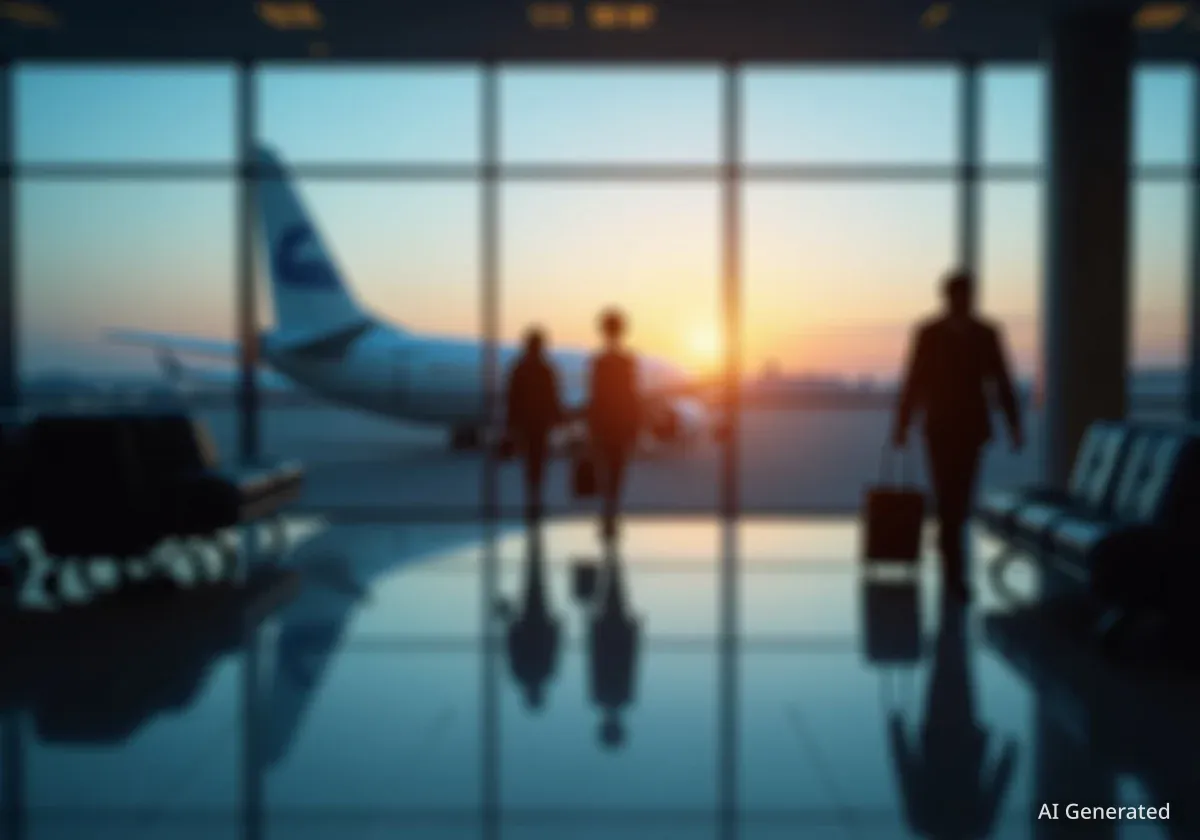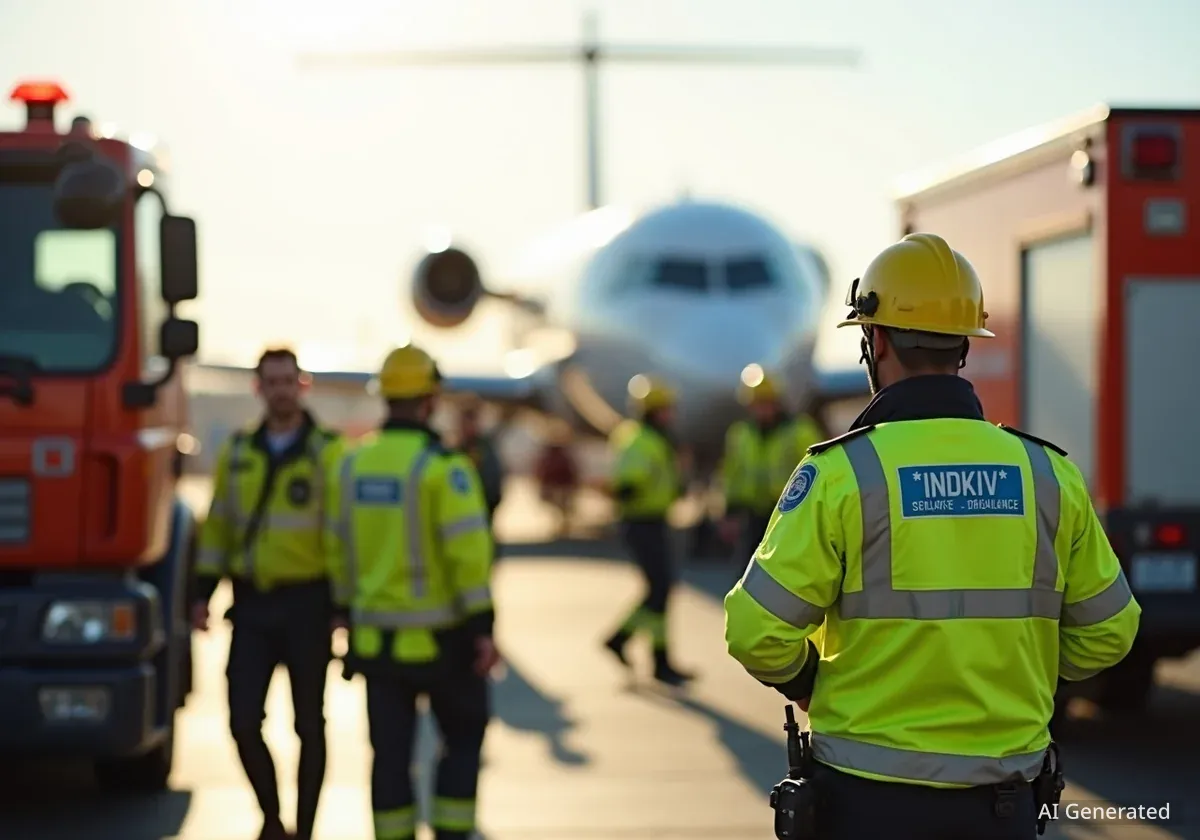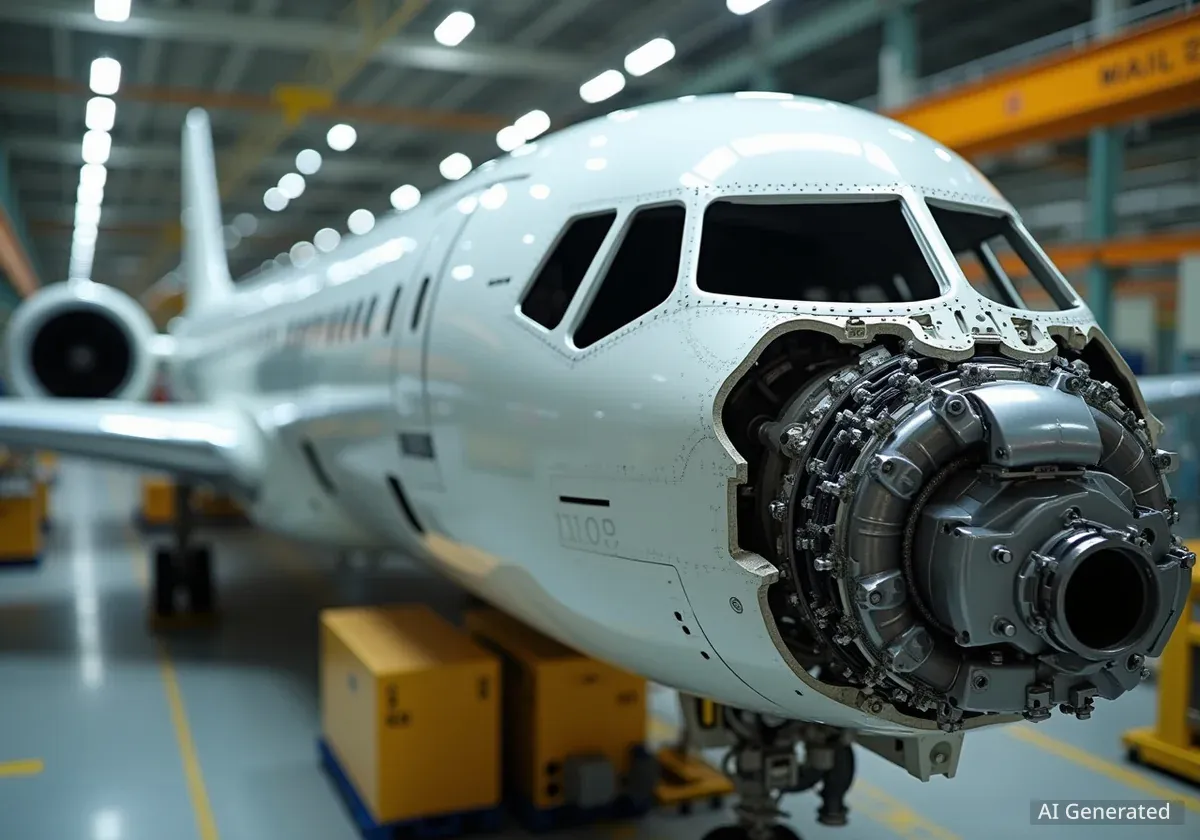A United Airlines flight experienced an unexpected incident on Sunday evening when a passenger attempted to open an aircraft door after landing at Houston's George Bush Intercontinental Airport (IAH). The attempt failed to open the door but resulted in the deployment of the emergency slide on the Boeing 737-800 aircraft. This event occurred around 6:30 PM while the plane was taxiing to the gate.
Law enforcement officials in Houston detained the passenger. The individual underwent a medical evaluation at a local hospital before being taken into custody. Other passengers on board were transported to the terminal by bus, ensuring their safe disembarkation without further issues.
Key Takeaways
- A passenger on United Airlines flight UA788 attempted to open an aircraft door after landing in Houston.
- The attempt caused the emergency slide on the Boeing 737-800 to deploy.
- Houston police detained the passenger after a medical evaluation.
- The incident highlights critical aviation safety protocols on the ground.
- Airlines face significant costs and operational delays from such events.
Incident Details on Flight UA788
United Airlines flight UA788 originated from Indianapolis International Airport (IND). It completed its journey and landed safely at George Bush Intercontinental Airport (IAH) in Houston. The incident took place during the taxiing phase, a period when aircraft move on the ground under their own power after landing.
During this time, a passenger reportedly tried to open one of the aircraft's doors. While the door itself did not open due to its design, the act triggered the automatic deployment of the emergency slide. This mechanism is designed to activate when an armed door is opened.
Fact: Emergency Slide Deployment
An emergency slide deploys automatically if an aircraft door is opened while the slide is in the 'armed' position. This setting is typically activated after pushback from the gate and remains active until the aircraft reaches its destination gate.
Immediate Response and Passenger Impact
Upon notification of the deployed slide, ground crews and local law enforcement responded to the aircraft. Police officers met the plane at its gate. The disruptive passenger received a medical assessment at a hospital before being taken into custody by Houston police. The remaining passengers did not experience further disruptions. They were safely transported from the aircraft to the terminal using buses.
"The safety of our passengers and crew is our highest priority," a United Airlines spokesperson stated, emphasizing the airline's commitment to following all safety procedures.
Understanding Aircraft Door Mechanisms
Aircraft doors are designed to remain securely closed during flight. This is primarily due to the significant difference in air pressure between the pressurized cabin and the lower pressure outside the aircraft at cruising altitude. This pressure differential can exceed 2 pounds per square inch, effectively 'locking' the doors from the inside.
Once an aircraft lands and begins taxiing, the cabin pressure equalizes with the outside atmosphere. This removes the pressure lock. Boeing 737 models, for example, have a maximum pressure differential of 0.125 psi during takeoff and landing. This low differential allows doors to be opened if they are armed and the mechanism is engaged.
Technical Aspects of Aircraft Safety Systems
The arming and disarming of emergency slides are critical safety procedures. Flight attendants arm the slides before pushback from the gate. This means that if a door is opened, the slide will deploy automatically. The slides remain armed throughout the flight and during taxiing after landing.
Slides are disarmed only when the aircraft has reached its destination gate and ground personnel are ready to connect jet bridges or stairs. Opening an armed door on an active taxiway poses risks. It can create a hazard for ground operations and compromise the safety of passengers if an evacuation is not necessary.
Preventing Inadvertent Deployments
Aviation authorities and airlines emphasize the importance of correct arming and disarming procedures. According to View from the Wing, FAA operations bulletins and Airbus notices frequently highlight proper timing for these actions. The goal is to prevent accidental deployments while ensuring slides are ready for use in a genuine emergency.
- Armed State: Doors are armed from pushback until arrival at the gate.
- Disarmed State: Doors are disarmed only when the aircraft is safely parked at the gate.
- Pressure Differential: This prevents doors from opening in flight but allows them to open on the ground if armed.
Financial and Operational Impacts
Emergency slide deployments are costly for airlines. The immediate financial burden stems from the need to repair and repack the deployed slide. This basic service can average around $12,000. Additional costs include thorough testing, inspections, and potential replacement of components, which can add another $5,000 to $20,000 to the total expense.
Beyond direct repair costs, airlines face significant operational disruptions. A deployed slide often leads to flight delays or cancellations. These delays can range from two to four hours, costing the airline an estimated $10,000 to $30,000 per incident. Such events require immediate ground crew intervention, diverting resources and impacting scheduled operations.
Cost of a Deployed Slide
The total cost for a deployed emergency slide, including repairs, inspections, and flight delays, can range from $27,000 to $62,000 per incident.
Previous Incidents and Passenger Behavior
The United Airlines incident in Houston is not an isolated event. Similar occurrences have been reported across the airline industry, highlighting ongoing challenges with passenger behavior and the sensitivity of aircraft safety systems.
Examples of Past Incidents:
- A Delta Air Lines flight once experienced an emergency slide detaching mid-flight near New York's JFK Airport.
- Another Delta 767 had a slide explosion after diverting to Salt Lake City (SLC).
- In 2019, a Delta slide detached and landed in a residential area near Boston (BOS).
- An Asiana Airlines passenger opened an exit door just 800 feet before landing. This was possible because the pressure differential was minimal at that late stage of descent.
These incidents underscore the importance of passenger compliance with crew instructions. They also show how sensitive safety systems are, even when an aircraft is on the ground or close to it. The rules for remaining seated and not touching emergency exits are in place for critical safety reasons.
Passenger Motivation and Future Outlook
Authorities have not yet released information regarding the specific motive behind the United passenger's actions. While the incident did not cause lasting structural damage to the aircraft, it led to operational disruptions and raised questions about passenger conduct during air travel.
Aviation experts consistently point out that such actions, whether intentional or accidental, can be both dangerous and expensive. They stress the need for continued vigilance from both airlines and passengers. Adherence to safety protocols at all times is essential for maintaining the integrity of air travel operations. The event serves as a reminder of the critical importance of following all instructions from airline crew, particularly during the crucial phases of takeoff, landing, and taxiing.





